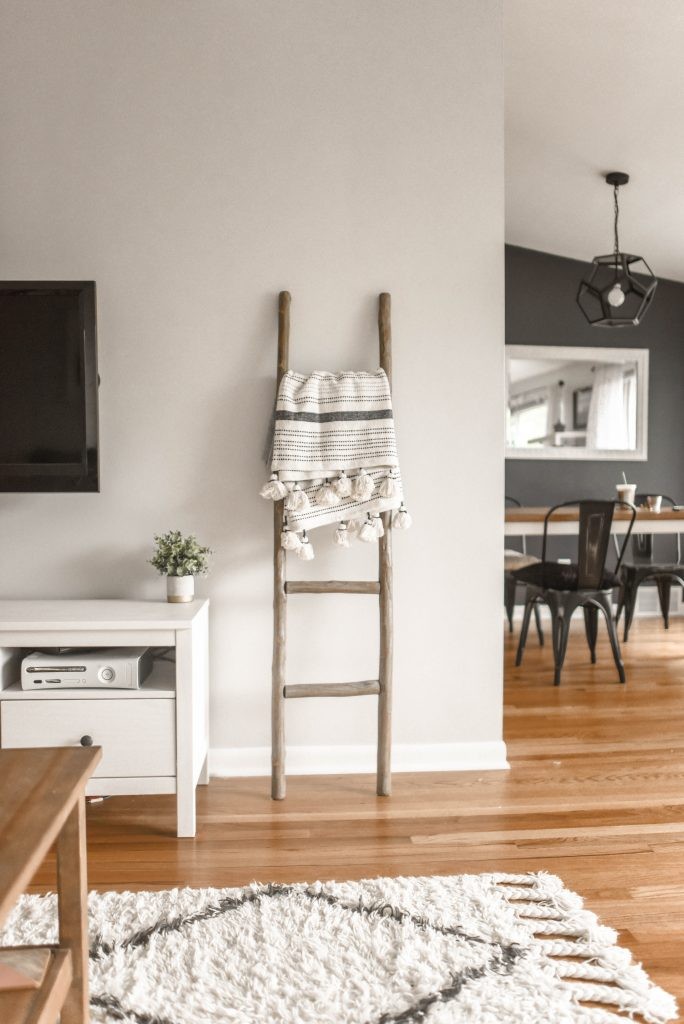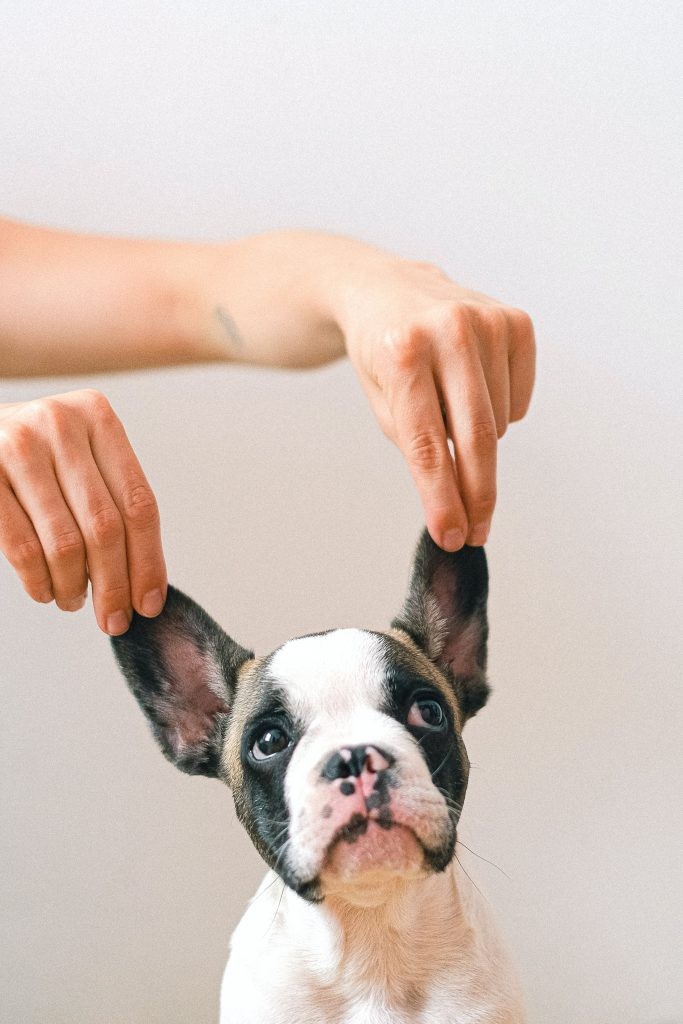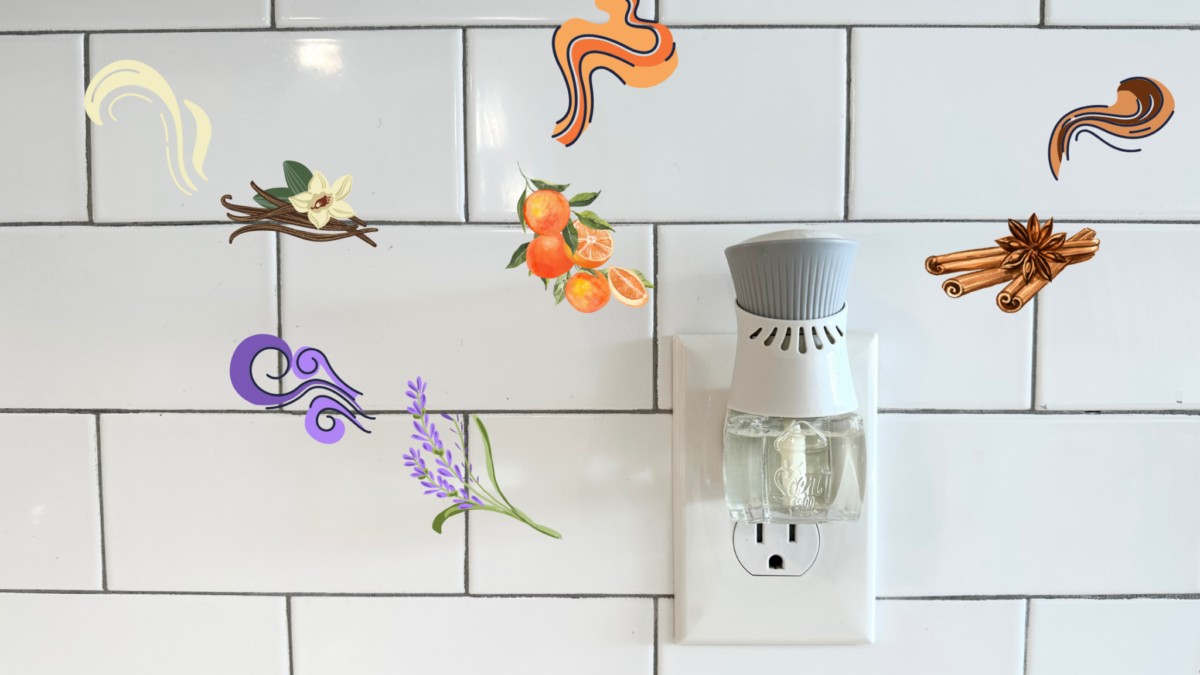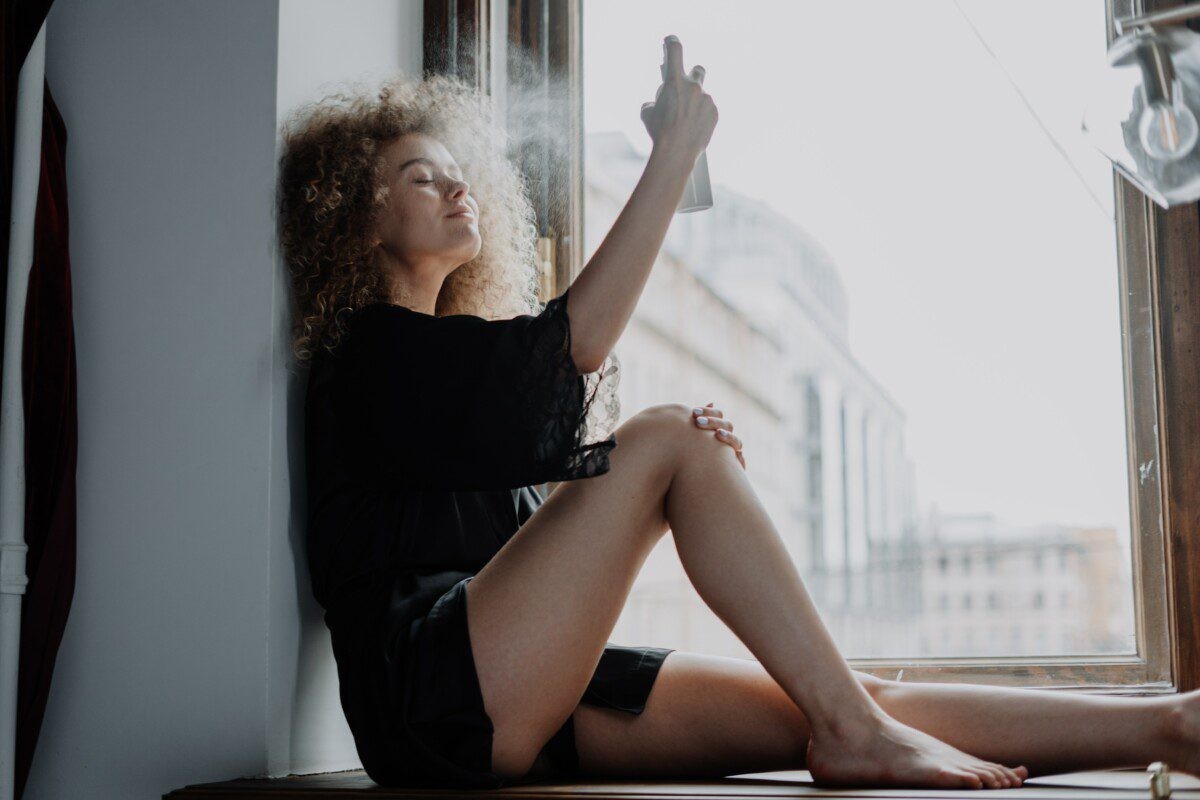Are Bath and Body Works Wallflowers safe for pets? This is a crucial question for pet owners who love a fragrant home. At PETS.EDU.VN, we understand your concerns and aim to provide clear, reliable information about the safety of household products for your beloved animals, offering peace of mind and safer alternatives for a fragrant home. Learn about potential risks and safer home fragrance solutions!
1. Understanding Bath & Body Works Wallflowers
Bath & Body Works Wallflowers are plug-in air fresheners designed to release continuous fragrance into your home. Similar to other plug-in air fresheners, Wallflowers consist of a plug-in device and fragrance refills, offering a variety of scents marketed as “always-on” fragrances. These devices plug into standard wall outlets and use a heating element to diffuse the fragrance oil into the air.
1.1. How Wallflowers Work
Wallflowers operate by heating fragrance oils, which then evaporate and disperse into the room. The fragrance refills typically last about 30 days, while the plug-in device itself can last for approximately two years.
1.2. Are Wallflowers Safe to Leave Plugged In?
Generally, it is considered safe to leave Wallflowers plugged in for extended periods because they consume minimal electricity. The primary safety concern arises from faulty wiring in the electrical outlet, which is unrelated to the air freshener itself. Regular inspection of electrical outlets is always recommended.
2. What Exactly is an Air Freshener?
An air freshener is a product designed to release fragrance into the air, whether through plug-ins, sprays, or gels. It’s important to note that air fresheners do not actually purify the air or reduce indoor air pollution. Instead, they mask existing odors with a more pleasant scent.
2.1. Potential Health Impacts of Air Fresheners
Experts suggest that prolonged exposure to chemicals found in traditional air fresheners can negatively affect health and well-being. These chemicals, while making manufacturing more efficient, can contribute to indoor air pollution, which the EPA notes can sometimes be worse than outdoor pollution.
2.2. How Wallflowers Freshen the Air
Wallflower refills contain fragrance oils that, when heated, release synthetic fragrances into the air. This process doesn’t eliminate odors but rather covers them up with artificial scents.
3. Analyzing the Toxicity of Bath & Body Works Wallflowers
While Bath & Body Works promotes Wallflowers as containing essential oils, these are often mixed with potentially harmful chemicals. These chemicals can pose risks to both humans and pets.
3.1. Common Harmful Chemicals in Wallflowers
- Formaldehyde: Used in various products, formaldehyde is a known carcinogen and is strictly regulated in Europe.
- Phthalates: Used to extend the life of fragrances, phthalates are commonly found in personal care and air freshening products.
- Fragrance: U.S. laws allow companies to include numerous undisclosed toxic chemicals under the umbrella term “fragrance.”
- Volatile Organic Compounds (VOCs): VOCs easily turn into gas, contributing significantly to indoor air pollution and potentially harming respiratory and cardiovascular health.
- Other Additives: These can include colorants, propylene glycol (banned in Europe), and petroleum-based synthetics.
3.2. Detailed Look at Harmful Chemicals
| Chemical | Potential Health Effects | Common Uses | Regulation Status |
|---|---|---|---|
| Formaldehyde | Carcinogenic, respiratory irritant, skin irritant | Glues, cosmetics, dishwashing liquids, paints | Strictly regulated in Europe due to carcinogenic properties |
| Phthalates | Hormone disruption, developmental and reproductive toxicity | Soaps, shampoos, air fresheners (to make fragrances last longer) | Limited regulation in the U.S. |
| Fragrance | Allergies, asthma, skin irritation, potential endocrine disruption | Wide range of personal care and household products | Often contains undisclosed toxic chemicals |
| VOCs | Respiratory irritation, headaches, nausea, long-term organ damage | Paints, cleaning supplies, air fresheners | Regulated, but levels can still be harmful |
| Propylene Glycol | Skin irritation, allergic reactions, potential for organ toxicity at high concentrations | Deodorants, shampoos, conditioners | Banned in Europe due to safety concerns |





These chemicals can cause various health issues, especially with prolonged exposure. It’s important to be aware of these risks and consider safer alternatives to protect your health and the health of your pets.
4. The Safety of Wallflowers for Humans and Pets
Given the presence of potentially harmful chemicals, Wallflowers can be toxic to both humans and pets when inhaled. Long-term exposure can lead to significant health issues.
4.1. Risks to Humans
Inhaling chemicals from Wallflowers can cause:
- Allergy symptoms
- Hormone disruption
- Coughing
- Stomach upset
- Skin irritation and rashes
Ingestion, especially by small children, can be particularly dangerous.
4.2. Effects on Cats
Essential oils in Wallflowers can be highly toxic to cats. Ingestion should be strictly avoided. Inhaling these oils can cause:
- Feline asthma
- Neurological problems
According to a study published in the Journal of Feline Medicine and Surgery, certain essential oils can cause liver damage and central nervous system depression in cats.
4.3. Effects on Dogs
Dogs can also suffer adverse effects from inhaling air fresheners, including:
- Neurological problems: unsteadiness, weakness, tremors
- Asthma and allergies
Research from the American Veterinary Medical Association highlights that dogs exposed to VOCs and other chemicals found in air fresheners can develop respiratory issues and exacerbate existing conditions.
5. Safer Alternatives to Bath & Body Works Wallflowers
Choosing safer alternatives can significantly reduce the risks associated with conventional air fresheners. Consider these options to maintain a pleasant-smelling home without compromising health.
5.1. Non-Toxic Plug-In Air Fresheners
Opt for plug-in air fresheners that use natural ingredients and avoid harmful chemicals. Some safer options include:
- Aera: Diffusers that use natural scents and offer precise control via a smartphone app.
- Scent Fill: Offers plug-in air fresheners with non-toxic ingredients.
5.2. Other Natural Home Scenting Methods
- Essential Oil Diffusers: Allow you to create custom scent blends using organic essential oils.
- Boiling Citrus Peels: A natural way to release a fresh, citrusy aroma into your home.
- Ionic Air Sanitizers: Circulate negatively charged ions to create a fresher indoor environment.
- Scented Soy Candles: Offer a cleaner burning alternative to traditional paraffin candles.
5.3. Pet-Safe Essential Oils
Some essential oils are generally considered safe for pets when diffused, but it’s always best to consult with your veterinarian before using any essential oils around your animals. Here are a few options:
- Lavender
- Copaiba
- Frankincense
- Peppermint (use with caution and in diluted form)
- Petitgrain
5.4. Essential Oils to Avoid
Certain essential oils can be harmful to pets. Avoid using the following oils around dogs and cats:
- Cinnamon
- Citrus
- Pine
- Tea Tree
- Ylang Ylang
Here’s a detailed comparison of safe and unsafe essential oils for pets:
| Essential Oil | Safety for Dogs | Safety for Cats | Potential Benefits |
|---|---|---|---|
| Lavender | Safe | Safe | Calming, reduces anxiety, promotes relaxation |
| Copaiba | Safe | Safe | Anti-inflammatory, pain relief, supports immune system |
| Frankincense | Safe | Safe | Immune support, reduces inflammation, promotes cellular health |
| Peppermint | Use with Caution | Use with Caution | Digestive aid, relieves nausea, can be stimulating (use diluted and monitor closely) |
| Petitgrain | Safe | Safe | Calming, reduces anxiety, uplifts mood |
| Cinnamon | Avoid | Avoid | Toxic, can cause liver damage and respiratory issues |
| Citrus | Avoid | Avoid | Toxic, can cause skin irritation and central nervous system depression |
| Pine | Avoid | Avoid | Toxic, can cause liver damage and respiratory irritation |
| Tea Tree | Avoid | Avoid | Highly toxic, can cause neurological symptoms and skin irritation |
| Ylang Ylang | Avoid | Avoid | Toxic, can cause respiratory distress and skin irritation |
Always introduce new scents gradually and monitor your pet for any adverse reactions. Consult your veterinarian for personalized advice.
5.5. Natural Cleaning and Deodorizing Products
Maintaining a clean home with non-toxic products can also help reduce odors. Consider using:
- Grow Fragrance: Plant-based air fresheners with transparent ingredient lists.
- Moso Natural: Odor-absorbing bags made from non-toxic materials.
- Branch Basics and Force of Nature: Non-toxic, refillable household cleaners.
6. Alternative Home Scenting Methods
Explore these options for creating a pleasant atmosphere without relying on potentially harmful chemicals:
- Simmering Potpourri: Simmering spices and herbs in water releases natural fragrances into your home.
- Baking Soda: Placing open boxes of baking soda around the house can absorb odors.
- Houseplants: Certain houseplants, like peace lilies and spider plants, can help purify the air.
- DIY Linen Sprays: Create your own linen sprays using essential oils and distilled water.
7. What About Other Bath and Body Works Products?
Bath & Body Works offers a variety of products, including candles, body sprays, shampoos, and soaps. When considering these products, it’s important to evaluate their ingredients and potential health impacts.
Key questions to ask:
- Do Bath & Body Works products contain non-toxic ingredients?
- Is the brand vegan and cruelty-free?
- Are their products eco-friendly and sustainable?
You can find more detailed information on the safety and sustainability of Bath & Body Works products on PETS.EDU.VN.
8. Key Considerations for Pet Owners
When choosing home fragrance products, pet owners should prioritize the health and safety of their animals. Be mindful of the following:
- Read Labels Carefully: Check the ingredient lists of all products before using them in your home.
- Ventilate Your Home: Ensure proper ventilation when using any air freshening products.
- Monitor Your Pets: Watch for any signs of adverse reactions, such as coughing, sneezing, or skin irritation.
- Consult Your Vet: If you have concerns about the safety of a product, consult with your veterinarian.
9. Addressing Common Concerns
Here are some frequently asked questions about the safety of air fresheners and pets:
9.1. FAQ: Are Air Fresheners Safe for All Pets?
No, different pets may react differently to air fresheners. Cats and birds are particularly sensitive to airborne chemicals.
9.2. FAQ: Can Air Fresheners Cause Allergies in Pets?
Yes, air fresheners can trigger allergic reactions in pets, leading to symptoms such as skin irritation, respiratory distress, and digestive upset.
9.3. FAQ: What Are the Signs of Air Freshener Poisoning in Pets?
Signs of poisoning can include:
- Drooling
- Vomiting
- Diarrhea
- Lethargy
- Seizures
- Difficulty breathing
9.4. FAQ: How Can I Tell if an Essential Oil Is Safe for My Pet?
Consult with your veterinarian before using any essential oils around your pets. Research reputable sources and look for oils that are specifically labeled as pet-safe.
9.5. FAQ: What Should I Do If My Pet Ingests an Air Freshener?
Contact your veterinarian or an animal poison control center immediately.
9.6. FAQ: Are Natural Air Fresheners Always Safer?
While natural air fresheners are generally safer than conventional products, it’s still important to read labels carefully and be aware of potential allergens or irritants.
9.7. FAQ: Can I Use Scented Candles Around My Pets?
Use scented candles with caution. Opt for soy or beeswax candles with natural fragrances and ensure proper ventilation. Never leave a burning candle unattended.
9.8. FAQ: How Often Should I Ventilate My Home?
Ventilate your home regularly, especially after using cleaning products or air fresheners. Open windows and doors for at least 10-15 minutes each day.
9.9. FAQ: What Are Some Pet-Friendly Ways to Deodorize My Home?
- Baking soda
- Vinegar
- Houseplants
- Essential oil diffusers (with pet-safe oils)
- Regular cleaning
9.10. FAQ: Where Can I Find More Information on Pet Safety?
Visit PETS.EDU.VN for more articles and resources on pet health and safety.
10. Conclusion: Making Informed Choices
While the allure of a fragrant home is understandable, it’s essential to consider the potential health impacts of air fresheners on both yourself and your pets. By choosing safer alternatives and being mindful of the ingredients in your home fragrance products, you can create a healthier and more pleasant environment for everyone.
At PETS.EDU.VN, we encourage you to explore our resources and make informed decisions that prioritize the well-being of your furry friends. Remember, a healthy home is a happy home.
Need more information or personalized advice?
Contact us at:
- Address: 789 Paw Lane, Petville, CA 91234, United States
- WhatsApp: +1 555-987-6543
- Website: PETS.EDU.VN
Let pets.edu.vn help you create a safe and fragrant home for you and your pets! We are dedicated to providing expert advice and reliable information, making pet care easier and more enjoyable.
